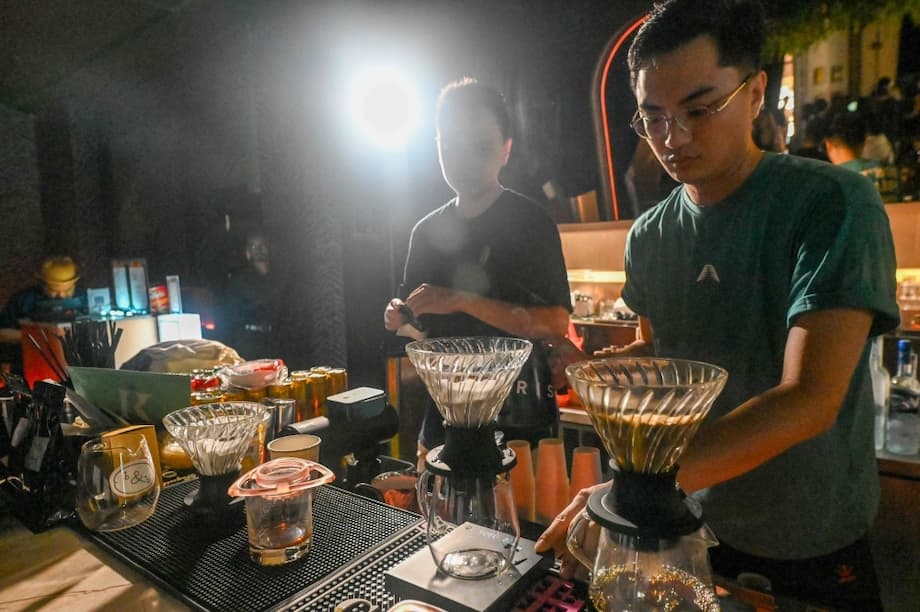Singapore Restaurateurs Seek Relief in Johor Bahru
Singapore’s food and beverage (F&B) scene, long celebrated for its diversity and innovation, is facing unprecedented challenges. In 2024 alone, over 3,000 F&B establishments in Singapore shuttered their doors, with the first half of 2025 already seeing nearly 2,000 more closures. Soaring rents, labor shortages, and tight foreign worker policies have left many restaurateurs searching for alternatives. Increasingly, their gaze is turning north—to Johor Bahru (JB), Malaysia’s bustling border city, where lower operating costs and a growing middle-class market offer a much-needed lifeline.
- Singapore Restaurateurs Seek Relief in Johor Bahru
- Why Are Singapore Restaurateurs Moving to Johor Bahru?
- Cross-Border Logistics: Opportunities and Obstacles
- The Broader Context: Labor, Talent, and Economic Ties
- Risks and Realities: Not All That Glitters Is Gold
- The Future: Integration, Innovation, and the Cross-Border F&B Scene
- In Summary
Hyderabadi chef Govinda Rajan, owner of the popular Mr Biryani chain, is among those making the move. After opening his first Malaysian branch in JB just three months ago, Rajan is already planning further expansion. “It’s a lifeline,” he says, as his Singapore outlets struggle to stay afloat. He’s not alone: restaurateurs like Keith Koh, who recently launched a Muslim-friendly version of Lad & Dad in Kuala Lumpur, report rediscovering their passion and reducing burnout thanks to Malaysia’s more manageable costs.
Why Are Singapore Restaurateurs Moving to Johor Bahru?
The migration of Singaporean F&B businesses to JB is driven by several interlocking factors:
- High Rents in Singapore: Commercial rents in Singapore have reached record highs, squeezing profit margins and making it difficult for new and established restaurants to survive.
- Labor Shortages: Singapore’s strict foreign worker quotas and levies, combined with a local workforce that often shuns service jobs, have left many restaurants chronically understaffed.
- Lower Costs in JB: While some ingredients may be pricier in Malaysia, overall costs—including rent and wages—are significantly lower, restoring profitability for many operators.
- Access to a Growing Market: Johor Bahru’s expanding middle class and its proximity to Singapore make it an attractive destination for restaurateurs seeking new customers.
Geoffrey Tai of Temasek Polytechnic notes that more operators are expanding regionally to escape Singapore’s high overheads and tap into Malaysia’s growing consumer base. Chef-owner Bjorn Shen, who has expanded to Penang and Bali, reports that profits of 20–30% are achievable abroad, compared to just 5–7% in Singapore, where most new restaurants fail within two years.
Johor Bahru: A New Culinary Frontier
Johor Bahru is no stranger to Singaporean influence. The city’s F&B scene is vibrant, with a mix of local eateries, international chains, and now, an increasing number of Singaporean brands. Areas like the city centre near City Square and Komtar JBCC, as well as the heritage district, are popular for their concentration of restaurants, bars, and shopping malls. Hotels such as DoubleTree by Hilton and Holiday Villa are surrounded by dining options, making them attractive for both tourists and business owners.
However, JB’s infrastructure presents its own challenges. Pedestrian walkability is limited, and most travel within the city requires taxis or ride-hailing apps. Still, the lower cost of doing business and the city’s proximity to Singapore continue to draw restaurateurs across the border.
Cross-Border Logistics: Opportunities and Obstacles
Operating a business across the Singapore-JB border is not without its hurdles. The Johor-Singapore Causeway is one of the world’s busiest land crossings, with about 300,000 people using it daily. During peak periods, such as public holidays, this number can swell to over half a million in a single day. For restaurateurs and their staff, efficient border crossing is crucial.
Border Crossing: The Daily Commute
Many Singaporean restaurateurs and their employees commute daily between the two cities. The journey, however, is fraught with unpredictability. Buses are the most affordable option but are subject to long immigration queues and traffic jams, often taking one to two hours each way. The train offers a faster alternative, bypassing road congestion, but tickets are limited and sell out quickly. Licensed cross-border taxis provide convenience at a higher cost and are still affected by traffic conditions.
Recent years have seen technological improvements aimed at easing congestion. Malaysia’s e-gate system, now open to citizens of 63 countries including Singapore, allows eligible travelers to use automated gates for faster entry. Most travelers must fill out the Malaysia Digital Arrival Card (MDAC) before arrival, though Singaporeans are exempt. First-time users must register at a manual counter, but subsequent trips can be made using the e-gate, significantly reducing wait times.
Singapore is also rolling out passport-free clearance at land and sea checkpoints. Starting December 2024, travelers can use QR codes generated via the MyICA app for immigration clearance at Tuas and Woodlands checkpoints. This system, already tested with tens of thousands of participants, promises to further streamline cross-border movement for both individuals and groups.
Despite these advances, technical glitches can still cause chaos. In July 2025, a major autogate system failure at the Bangunan Sultan Iskandar (BSI) Customs, Immigration and Quarantine Complex in JB disrupted travel for over 380,000 people. Long queues formed as manual counters struggled to cope, highlighting the fragility of even the most advanced systems at one of the world’s busiest crossings.
Legal and Regulatory Risks
Operating in JB also means navigating Malaysia’s regulatory environment. Immigration raids are not uncommon, targeting businesses that employ illegal workers or operate without proper licenses. In November 2024, Johor authorities detained 85 illegal immigrants—including a Singaporean man working as a waiter—during a series of raids on F&B establishments. Offences ranged from overstaying and misusing visit passes to working without permits. The message from authorities is clear: compliance with immigration and labor laws is strictly enforced.
There are also personal risks. Singaporeans working or traveling in JB have reported negative encounters with immigration officers, including one high-profile case where a Singaporean writer was detained for seven days after a dispute at the checkpoint. Such incidents underscore the importance of understanding and respecting local regulations and procedures.
The Broader Context: Labor, Talent, and Economic Ties
The movement of Singaporean restaurateurs to JB is part of a larger pattern of cross-border workforce migration. While Singapore attracts Malaysian talent with higher wages and better job prospects, the reverse is now happening in the F&B sector as Singaporeans seek relief from rising costs at home.
Malaysia’s Brain Drain and Singapore’s Labor Crunch
Malaysia has long grappled with a “brain drain” as skilled workers move to Singapore for better opportunities. Over half of the Malaysian diaspora in Singapore have tertiary qualifications, and many are skilled or semi-skilled workers. Singaporean employers value Malaysian workers for their skills and willingness to fill roles that locals may avoid. However, hiring Malaysians is not always cheaper due to levies and administrative costs.
For Singapore’s F&B sector, the labor crunch is acute. Tight foreign worker policies and a local workforce that often shuns service jobs have left many businesses short-staffed. This has contributed to high burnout rates and a wave of closures, pushing some operators to seek greener pastures in JB, where labor is more readily available and regulations are less restrictive.
Yet, the mutual dependency between the two economies is clear. Singapore’s prosperity benefits Malaysia, and vice versa. As more Singaporean businesses set up shop in JB, they create jobs, transfer skills, and contribute to the local economy. At the same time, Malaysia must balance the benefits of foreign investment with the need to retain its own talent and enforce its laws.
Risks and Realities: Not All That Glitters Is Gold
While the allure of lower costs and a new market is strong, industry insiders warn that many restaurateurs underestimate the risks of expanding to JB. The business environment is different, with its own regulatory, logistical, and cultural challenges. Success in Singapore does not guarantee success across the border.
Operational Challenges
- Regulatory Compliance: Navigating Malaysia’s licensing, labor, and tax requirements can be complex, especially for those unfamiliar with local laws.
- Border Delays: Even with technological improvements, border crossings remain a potential bottleneck, especially during peak periods or technical disruptions.
- Security Concerns: Incidents of crime and negative encounters with authorities, while not widespread, are a concern for some Singaporeans operating in JB.
- Market Differences: Consumer preferences, price sensitivity, and competition in JB may differ significantly from Singapore, requiring adaptation and local market research.
There are also stories of failed ventures and cautionary tales. Some Singaporeans have faced legal trouble for working without proper permits, while others have struggled to adapt to the different business environment. In extreme cases, attempts to circumvent immigration controls have ended in tragedy, such as the man who died after falling from a JB bridge while apparently evading inspection, or the two Bangladeshi men who were jailed and caned for attempting to swim into Singapore illegally from JB.
The Future: Integration, Innovation, and the Cross-Border F&B Scene
Despite the challenges, the trend of Singaporean restaurateurs moving to JB shows no sign of slowing. The Malaysian government is investing in infrastructure and technology to facilitate cross-border movement, including the upcoming Johor Bahru-Singapore Rapid Transit System Link, expected to carry up to 20,000 passengers per hour by the end of 2026.
For restaurateurs, the key to success lies in adaptation and compliance. Understanding local regulations, building relationships with local partners, and tailoring offerings to the JB market are essential. As border controls become more efficient and the two cities grow ever more interconnected, the cross-border F&B scene is poised for further growth and innovation.
Ultimately, the migration of Singaporean F&B businesses to JB is a testament to the resilience and adaptability of the region’s entrepreneurs. It reflects broader economic trends, labor dynamics, and the enduring ties between Singapore and Malaysia. For diners on both sides of the Causeway, it promises an even richer and more diverse culinary landscape in the years to come.
In Summary
- Singapore’s high rents and labor shortages are driving restaurateurs to open outlets in Johor Bahru, Malaysia.
- Lower operating costs and access to a growing middle-class market make JB attractive, but challenges remain.
- Cross-border commuting is common but can be hampered by traffic, immigration queues, and technical glitches.
- New technologies like e-gates and QR code clearance are easing border crossings, with further improvements planned.
- Legal compliance is crucial, as Malaysian authorities strictly enforce immigration and labor laws.
- The trend reflects broader economic and labor dynamics between Singapore and Malaysia, with mutual benefits and challenges.
- Success in JB requires adaptation, local knowledge, and respect for regulations.




